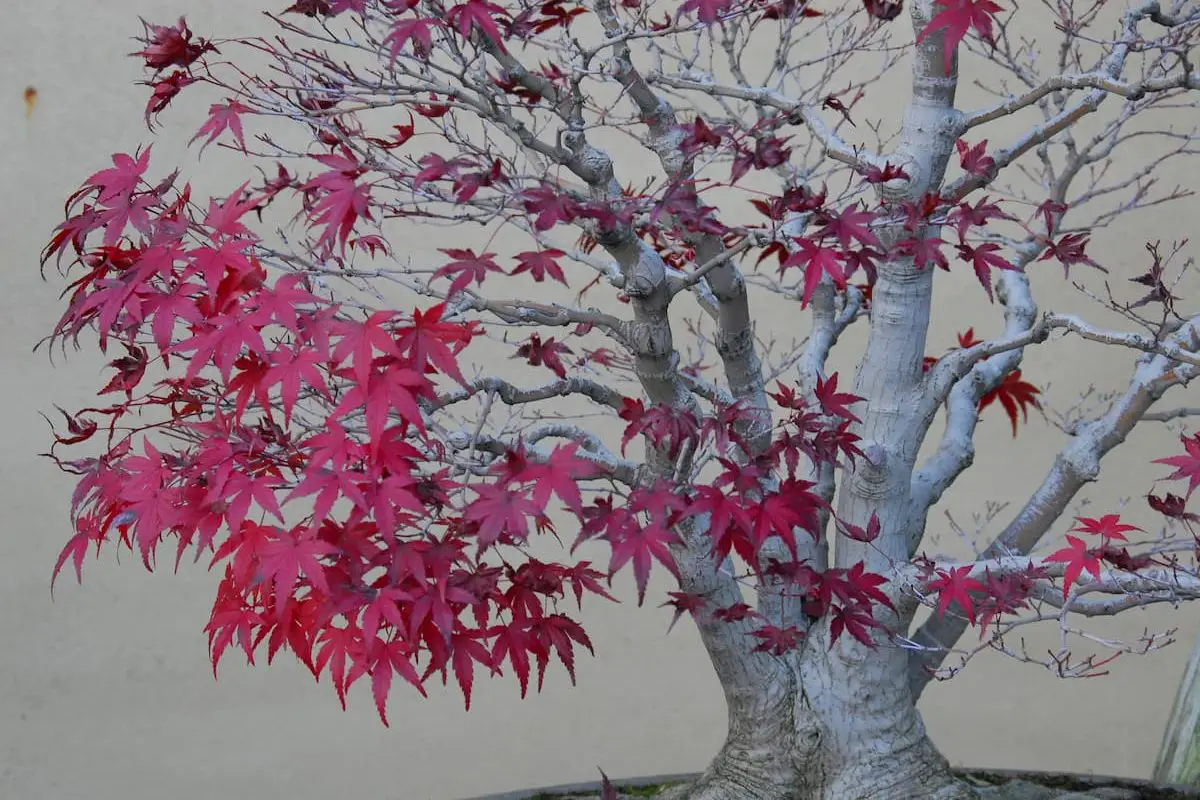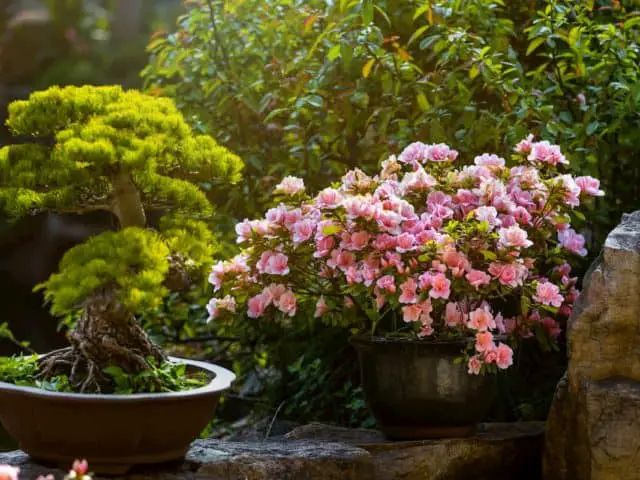Originating from Japan and China, the art of bonsai is challenging to master. Bonsai trees need regular maintenance and proper care to ensure their good health and beautiful appearance.
Indoor bonsai plants need a specific environment to thrive, which might lead you to wonder: “where should I place my bonsai tree at home?”
Your bonsai tree will need to sit in a location with plenty of natural sunlight and air circulation. It should also be humid, away from heat sources. Additionally, you’ll need to maintain the temperature of the location. The placement also depends on what season you’re bringing your bonsai tree home.
After choosing where to place your bonsai, you’ll need to give it time to acclimate itself. You need to keep an eye on several things, so keep reading to learn about them extensively.

Where Should I Place My Bonsai Tree at Home?
Wherever you place your bonsai, you’ll want to make sure that it gets the best environment to grow and flourish. Like humans, trees will remain healthy for a long time if they grow in a premium environment.
You’ll need to consider the factors I’ve mentioned below when it comes to placing your bonsai tree at the best possible location inside your home.
Appropriate Lighting
Your bonsai tree will need a well-lit environment to stay healthy, and there’s no alternative for that. Appropriate lighting is crucial for your bonsai’s growth, though deciding on the right amount can be tricky. The amount of light depends on what species your bonsai plant is.
Sunlight will keep your bonsai tree very healthy, so you have to store your bonsai tree where sunlight reaches the most. You can place your tree near the brightest window but never close to a fireplace.
If you don’t have an adequate sunny window in your home, you will need to get artificial lighting for your bonsai.
A “grow on” light with a timer can do an excellent job for your tree’s required supplement lighting. You’ll need to position your tree within at least three inches of the artificial light.
The lights need to be on for 12-16 hours a day, but you don’t have to bother with it as the timer is designed to do this job for you.
If you want to find out whether your bonsai tree is getting enough sunlight, you’ll have to look at its leaves. If the leaves are large with long and leggy shoots, it’s best to assume that the bonsai isn’t getting sufficient light.
Air Circulation
Every bonsai plant needs proper air circulation to remain in good health. As trees are supposed to grow outdoors, you’ll have to replicate bonsai trees’ natural habitat as much as possible if you plan to keep them indoors.
If debris and dust clog the bonsai’s pores, the stomata will not function properly and ultimately harm the bonsai’s photosynthesis.
Besides, you also have to be careful of stagnant air, which could produce a similar outcome. Every plant survives on photosynthesis, so you can’t risk its impairment in any way.
Additionally, you can keep pests and diseases away if you ensure fresh air and proper circulation. It will prevent spider mites and also facilitate osmosis by transporting necessary fluids to the leaves.
Proper ventilation promotes the evaporation rate, which prevents soil saturation and rotting of the roots.
In case you don’t have a supply of sufficient fresh air at your home, you can crack a door or window open or keep a fan running.
You can also spray clean water mists on the leaves regularly to prevent dust and debris accumulation. Your bonsai will have room to breathe and carry out photosynthesis effectively.
Temperature Control
The next factor to consider is the temperature when placing your bonsai tree in your house. You’ll need to keep your bonsai at the proper temperature to nurture it.
To avoid overheating, you have to keep your bonsai between 50 to 70 degrees Fahrenheit all the time. It would help if you also considered where your bonsai comes from to recreate a similar environment.
Additionally, you have to monitor your bonsai’s environment with a small thermometer, which will give you an accurate reading of the actual temperature.
The temperature of the surroundings should also be stable. Your bonsai plant should not experience a sudden drop or rise in temperature as it could be very detrimental for your bonsai.
Humidity
Bonsai plants prefer the humid unless they’re a low-humid species. It would help if you placed your bonsai tree somewhere with moisture in the air.
It’s a good idea to keep your bonsai in a humidity tray, which will prevent water from draining down at the bottom of the pot. If the central heating is on, the water will retain humidity around your tree.
You also have to ensure that the tray doesn’t pour onto your furniture. Besides, your bonsai plant should also not remain submerged in water, which might cause the roots to rot and make your bonsai weak.
You can spray water on the leaves to maintain the humidity level or get humidifiers with a high evaporative capacity.
Keep Away From Heat Sources
You’ll have to keep your bonsai where there is adequate daylight, but it should not be blazing because bonsai plants can’t tolerate extreme heat.
Avoid keeping your bonsai directly under the sun on the window or the radiator because it might lead your plant to dry out and death, ultimately.
Though I’ve outlined the basics of choosing a location for your bonsai plant indoors, you should still buy books by the bonsai enthusiasts who have been practicing this art for decades now.
You’ll get a comprehensive guide and vital information from those books, which will help you make an educated decision.
Paying Attention To the Weather
I don’t recommend changing your bonsai’s setting regularly as it might disturb the tree’s natural cycle. If you decide to bring your bonsai indoors, consider the season during that time.
Besides, you might have to frequently change your bonsai’s location if you’re living in extreme weather conditions.
During warm seasons, you should keep your bonsai tree away from the blazing heat of the sun. As it needs at least five hours of sunlight every day, you have to keep it in a bright place, but it should be cool as well.
You should also pay attention to the hot south-facing windows during this time. The bottom line is, you’ll need to keep your bonsai where good daylight reaches, but it should also be away from direct sunlight.
In winter, you’ll need a window facing south inside your house. The second-best location is an east or west window. You’ll need supplementary artificial lights if you place your tree in a northern exposure. Bonsai plants need four to five hours of sunlight in winter.
Additionally, you should keep the tree away from doors, fans, or open areas to avoid cold drafts. You’ll also need to keep it away from heating vents or other similar heat sources.
Opening and closing doors repeatedly can also harm your bonsai’s health, so make sure you’re careful about where you place it inside your house.
Conclusion
I hope this article was able to answer your question, “Where should I place my bonsai tree at home?”
As you have probably learned by now, you have a fair bit to think about placing your bonsai inside your home for providing it the proper environment to grow. And on top of that the weather is also something that should be taken into account.
If you are just learning about bonsai trees and looking to purchase high quality trees that will likely live longer than you then I would highly suggest checking out Bonsai Boy Trees as they are a long lasting New York business that provides trees for all price ranges!






